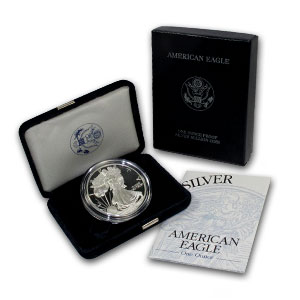Proof coins are those that are made in a different way to regular circulation coins. Although they carry the same design as the circulation versions of the coins, proofs have a much smoother, shinier appearance. Initially the proof production process was used to test the dies, or templates, for the coins and they were struck in small numbers at the start of a run.
Now though, they are made in larger quantities for the interest of coin collectors. Due to their value to collectors being higher than their face value, it is highly unlikely you will ever see one in circulation, even though they are mostly legal tender (depending on the coin).
It is worth pointing out that proofs are different than uncirculated coins. While proof coins are also uncirculated, proofs specifically are produced in a different way to regular coins that have not been circulated. Essentially proofs have a higher quality finish than uncirculated coins, and often utilize mirror finishes or specialized dies to produce a nicer looking coin.
The Production Process of Proof Coins
When coins are produced, or struck, they are made using a machine called a coin press. Blanks are fed into the press and are then struck by a pair of dies. These dies are essentially templates which are used to strike the coin with the desired pattern and inscriptions. Each side of the coins is struck with one die; hence the use of two dies for one coin.
When proof coins are made, these dies are highly polished. This results in a coin that has a much sharper appearance in terms of its rim and design. The blank areas of the coin which are not part of the coins design, known as fields, are also much smoother, while the device, or design elements of the coin are frosted, creating a high contrast between the two. Proof coins therefore have a much shinier appearance than normal circulation coins.
The above applies to regular proof coins but there is also a type of coin known as a reverse proof. For these coins, the design, or the device, of the coin is shiny and the flat fields are frosted.
In addition to the polishing of the dies, the blanks are struck twice by the dies instead of once. This gives the image on a proof a much higher level of detail than those found on regular coins.
Grades of Proofs
The use of the term proof in relation to coins actually refers to the production process of the coins, rather than the condition or appearance of the coins themselves. This means that different grades can be assigned to proof coins. For example PF70 is the highest grade of a proof coin, and indicates a perfect specimen, while a coin with a grade of PF69 or lower can indicate a less than perfect specimen.
Why Proofs Carry a Premium
If you’ve bought bullion coins before or have started looking at the different options available, you will probably have noticed that proof coins cost much more than the non-proof versions of the same coin. There are a few reasons for this price premium for proofs.
One reason is the fact that proofs take more time and effort to produce, thanks to the polishing of the dies, and the double striking process. This means they are sold by the mints for a higher price than the versions made for circulation.

A Proof American Silver Eagle with Box and CoA
Another reason is that these coins are produced in much more limited numbers than the circulation versions. Due to these limited numbers and their more attractive appearance, proof coins are more sought after, thus demanding a higher price.
Examples of Proof Coins
Here are some examples of silver bullion coins which are available as proofs:
- Proof Silver Libertads: these coins are .999-fine silver and feature the Angel of Independence and the Popocatepetl and Iztaccihuatl volcanoes of Mexico. They are available in a variety of packages including capsules and wooden presentation boxes, and from a range of years. They come in a range of denominations with each one selling for a different price, making them ideal for budgets of all sizes.
- Proof Silver American Eagle: this one dollar coin is available in a box with a certificate of authentication. At the time of writing, individual coins were on sale for $65.
- Australian Proof Silver Kangaroo: this coin is available in a 2013 edition and is made from pure silver. It features a kangaroo on the reverse and an image of Her Majesty Queen Elizabeth II on the obverse. The face value of this proof coin is one Australian dollar but it is on sale for $99.
Hopefully this article has answered any questions you had about proofs and you should now have a clearer picture on whether you are interested in investing in this type of coin.





